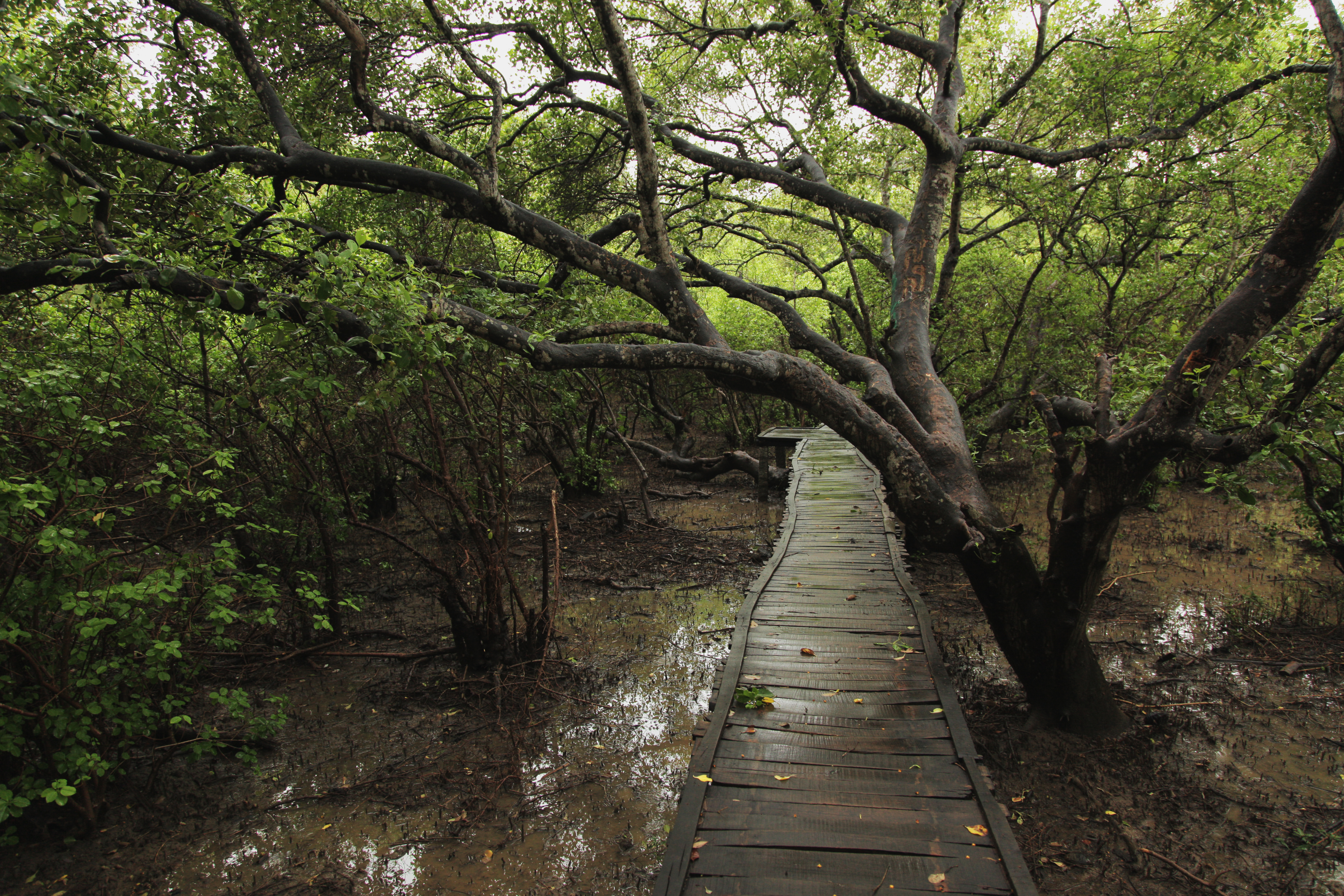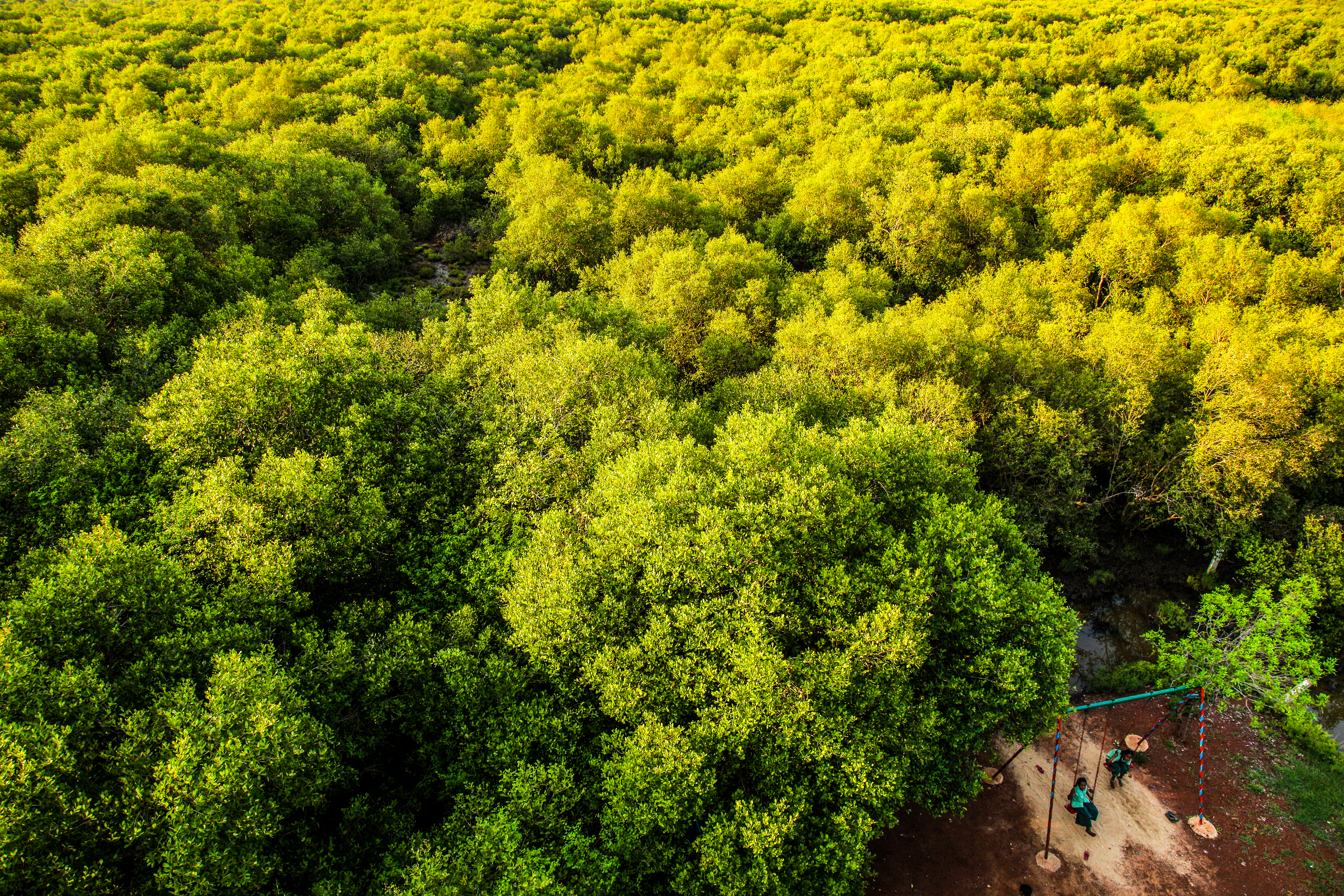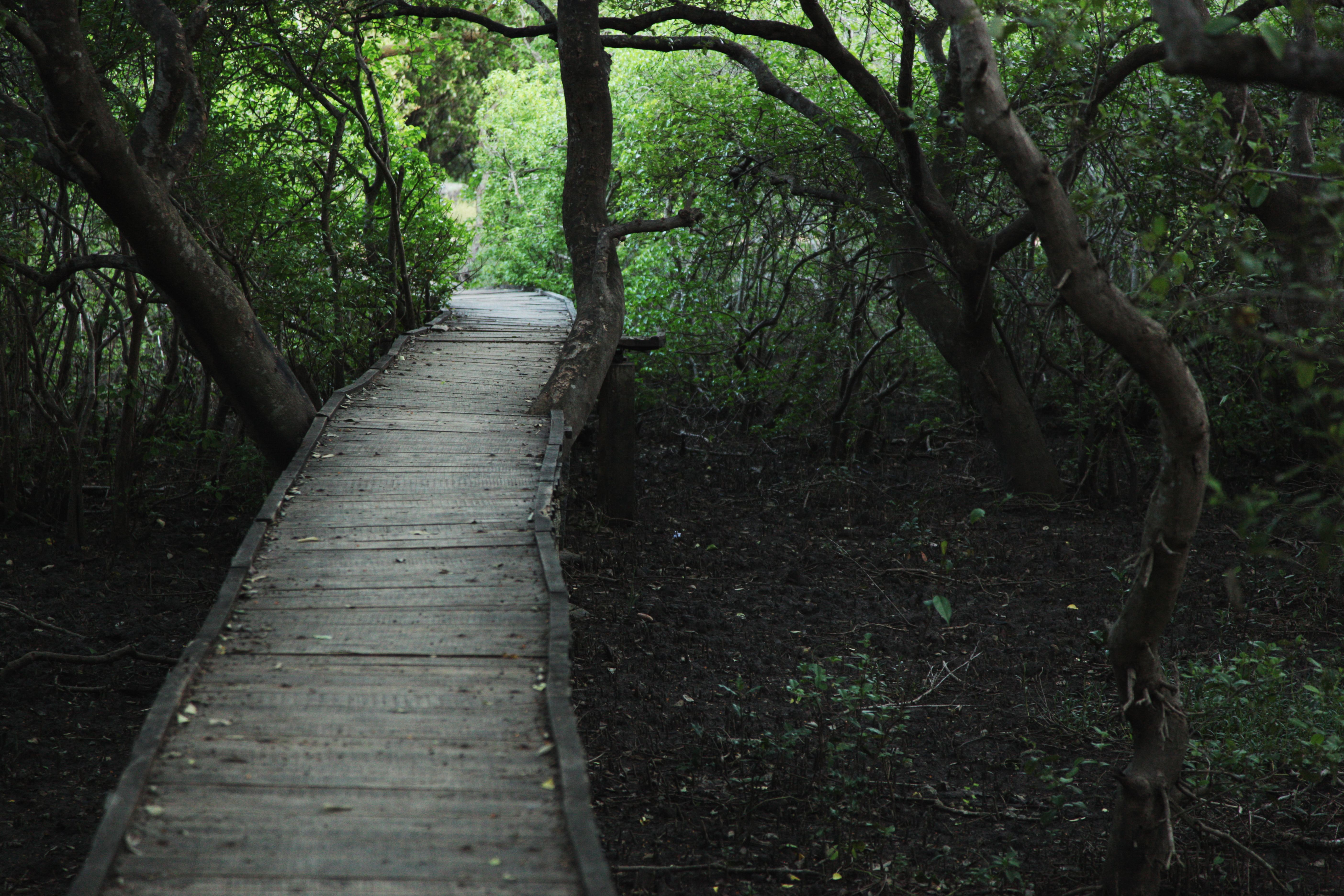
Photo: UNDP India
Occupying less than 0.1% of the planet’s surface, mangroves are one of Earth’s most valuable and threatened ecosystems. Largely misunderstood and undervalued, mangroves are often mistaken for actual forests instead of being acknowledged as the completely independent, biodiversity-rich ecological units that they constitute. Their proactive benefits vary from being the ‘lungs of cities’ to ‘shields during cyclones’- protecting people, infrastructure, and the ecologically fragile coastlines. In due recognition of the environmental and economic value that mangroves provide, 26th July came to be observed as the International Day for the Conservation of Mangrove Ecosystems.

Photo: UNDP India
Known for its unique biological diversity, the Godavari Delta, located on the Eastern Coast of the Indian peninsula, is an intrinsic component of India’s coastal and marine heritage The complex mesh of roots and the thick canopy of lush green branches spanning over acres and acres of inter-tidal zones are a sight to behold. The East Godavari River Estuarine Ecosystem (EGREE) encompassing Godavari mangroves is the second largest mangrove area, after the famous Sunderbans in West Bengal. Adding to the rich and diverse flora and fauna in the region, the mangroves are also of crucial economic value to the local communities as well as major production sectors. The protective covers offered by the mangroves save the shipping and port sectors from having to invest in the construction of other protective structures at huge costs. Mangroves play a crucial role as protectors as they shield the coastal cities from cyclones. The impact of the October 2014 cyclone, Hudhud that caused extensive damage to coastal cities including Vishakhapatnam could have been reduced had there been a flourishing mangrove cover. For instance, Hope Island, an island accessible only by boat off the Kakinada coast, is known for its natural breakwater spread over 1000 hectares that has protected the coast during cyclones. The mangroves are also a huge source of alternative income for fishermen in the region who largely depend on the ecosystem for their sustenance. Fishing constitutes a main source of livelihood for a large part of the population in the region. During the seasonal ban, when fishing in the high seas are prohibited or during a phase of steady drop in the catch, the many spawning grounds of fish offered by the mangroves is a good alternative source.
The Government of India has been implementing a mainstreaming biodiversity project since 2011, with funding from the Global Environment Facility and UNDP as the lead agency. The EGREE Foundation, set up under this Project, in partnership with the Forest Department of Andhra Pradesh has initiated several efforts to mainstream marine and coastal biodiversity conservation into production sectors and create awareness among the various communities and stakeholders in the region about the crucial role played by mangroves. One of the primary responsibilities adopted by the Foundation is to generate alternative livelihoods for local communities. These include programmes promoting eco-friendly tourism, and mangrove apiculture, wherein women beneficiaries from the community are being trained in bee-keeping to provide additional income. The apiculture initiative will be a triple victory – for the community, for the mangroves and will also make a significant contribution to the declining bee population.

Photo: UNDP India
Nature lovers in the region have been making a beeline towards the Coringa Wildlife Sanctuary, which is popular for its picturesque location as well as for the sighting of rare flora and fauna. Located on the backwaters of the Bay of Bengal, the sanctuary is home to numerous endangered species including the fishing cat, otter, jackal, sea turtle, sea gull, pelican, stork, heron, snipes, flamingos among others. Moreover, as many as 236 species of birds are spotted in and around the sanctuary with over 60,000 water birds visiting the sanctuary every year. Hope Island and Sacramento Island located in the mangrove region are two important nesting sites for the endangered Olive Ridley turtles.
A visit to the Coringa Wildlife Sanctuary is a unique experience with the unconventional fauna and flora, aquariums, sighting points for mudskippers, fishing cats and otters. The board walks at the Sanctuary are a unique feature. The second longest boardwalk in Asia, the Coringa Sanctuary boardwalk takes the tourists right into the heart of the dense mangrove forests. Local community members, who have been trained in mangrove interpretation, act as nature guides and help the tourists connect with nature by helping them identify the various species in the sanctuary, while also increasing awareness about each of their significance.
As the lifeline for the East Godavari region, the mangroves require utmost protection and for this, under the project, many mangrove plantation activities have been undertaken particularly in the Hope Island. We hope to make a difference in the lives of communities here while also enhancing awareness about the intrinsic value of mangroves in the region.
About the author
Anant Shankar, Indian Forest Service (IFS) is the Divisional Forest Officer DFO (Wildlife) in Rajahmundry, Andhra Pradesh. He is also the additional CEO of the East Godavari River Estuarine Ecosystem (EGREE) Foundation

 Locations
Locations